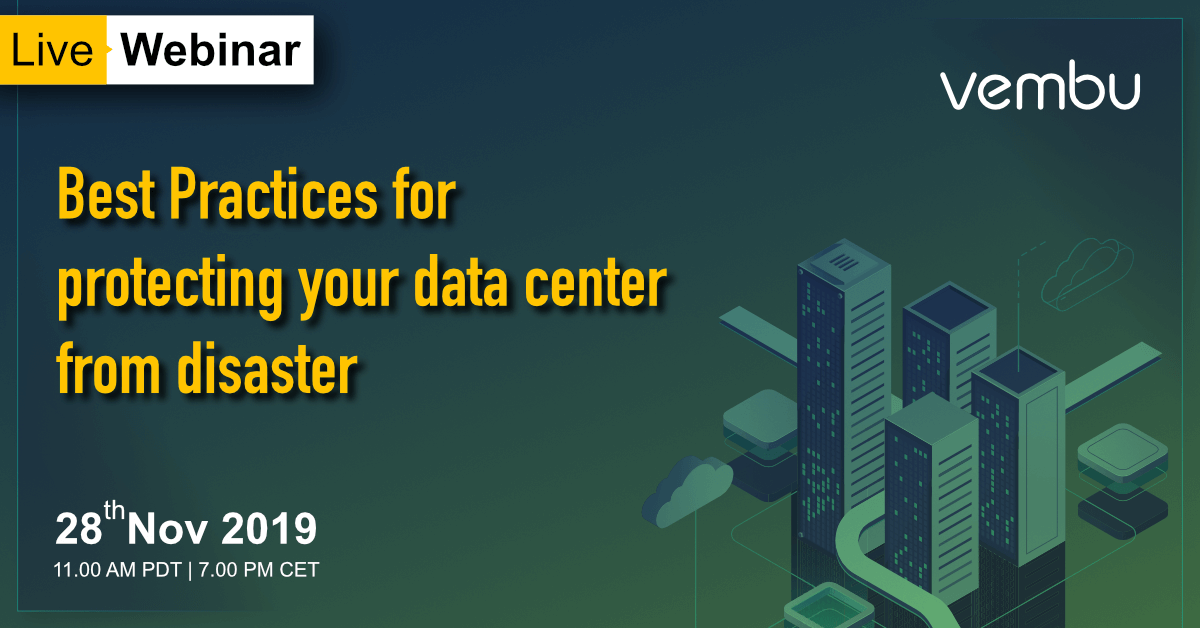Best Practices for Protecting Your Data Center from Disaster

Your datacenter feels almost like a living, breathing thing with all the various systems and complexities involved in make your production business-critical workloads run and perform as expected. There are many complex systems and architectures that allow your data to be stored, communicated, and updated as needed. When you think about the words “data center” the word “data” certainly stands out. Your data center is the “center” of your data for your organization and must be protected at all costs. Let’s take a look at Best Practices for Protecting Your Data Center from Disaster.
Why Protecting Data is the Priority
When I think about helping customers and clients with a disaster recovery strategy, the point I try to drive home is that your data is the “gold” of your business. Your business can live without the “systems” that service your data as these can be brought back online.
However, if you can’t bring the data back online and can only bring back the systems that service your data, you will be a critical situation. Businesses can literally go “out of business” if they suffer substantial data loss they can’t recover from.
Methodologies to Protect Your Data Center
To successfully protect your data center, you must think about protecting your data in a holistic approach. While even the best DR strategies can in freak instances, suffer data loss. However, your goal should be to make the odds of that happening as low as possible.
There are practical ways to do this. The 3-2-1 backup best practice methodology sets out to make sure that you have a good mix of multiple copies of your data as well as having data location diversity. If you have a major disaster, most likely it will only affect one of those locations and not all.
Principles of the 3-2-1 backup best practice includes:
- (3) copies of your data
- (2) different kinds of media
- (1) copy stored “offsite”
With this best practice methodology, you get multiple copies stored in multiple locations. This diversifies your data significantly and makes for protecting your data from disaster.
Best Practices for Protecting Your Data Center from Disaster
No organization can afford a sudden disaster. Those that are truly concerned about their business will find optimal strategies to make sure that the Business Continuity is not affected and critical data of their customers is not lost.
There are many different best practices for protecting your data center from disaster. These include the following:
- Creating a checklist of data-center objectives
- Assess the risks to data and operations
- Develop a backup and DR plan
- Implementing the industry best practices
Creating a Checklist of Data Center Objectives
Knowing your data protection objectives and what data is critically important helps you to define your objectives. This is extremely important to protecting your business-critical data.
This is a type of “discovery” phase that must be evaluated and executed thoroughly so that data is identified appropriately and by extension, is protected appropriately.
Assess the Risks to Data and Operations
Part of creating an effective disaster recovery plan is understanding the risks to your data. This is only possible with what is called a risk analysis. This helps to take the guessing out of what risks exist for your data and actually discovering realistically what those risks are.
Creating a risk analysis is a topic that can be covered in its own post, however, it is an extremely important part of your overall business continuity and disaster recovery plan.
Develop a Backup and DR Plan
So, this is the “meat and potatoes of your strategy to protect your data. Having a backup and DR plan is an essential step in protecting your data assets and putting technology to work for you.
A proper backup creates an exact copy of your production data in a completely separate environment that has no dependencies on your production infrastructure. Most modern backup solutions today provide great features such as change block tracking, replication, and site recovery tools that allow you to automate your entire backup solution so you can effectively recover a single file, a VM, or failover an entire site.
Your DR plan is born from the capabilities of your backup/data protection solution of choice. This where you leverage the capabilities of your backup solution to provide the means to have a fully comprehensive way to enable business-continuity, even during a disaster.
Implementing the Industry Best Practices
We have already touched on much of this in the earlier heading, however, using recommended best practices to protect your data and ensure business-continuity gives you the best chance possible to ensure your business can survive a disaster.
What are those best practices? How can you implement the above topics into your solution to protect and recover your data and/or site?
Vembu is hosting another really great webinar covering these and other topics around the topic of Best Practices for Protecting Your Data Center from Disaster.
Full disclosure here, Vembu is a sponsor of Virtualizationhowto.com. However, they have a great product and offer great solutions to the challenges around protecting your business-critical data.
The webinars are extremely informative and offer practical suggestions to help with solving many of the modern data center challenges around data protection and business continuity.
You can register for the upcoming webinar by clicking the banner below:

Vembu Backup and DR Solutions
Take a look at the following coverage of Vembu and their BC/DR solution:









